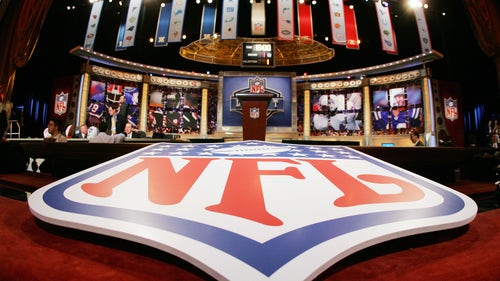
High frequency of missed extra points making NFL more competitive

Cards on the table, I didn’t really care for the NFL’s 2015 rule change that bumped extra points back to the 15-yard line. More than that, I really did not think it would matter much—a 33-yarder should be a chip shot for a professional kicker, right?
You win this round, Roger Goodell.
Kickers missed nine extra points during Sunday’s early action, including three at games played indoors (Detroit’s Matt Prater, Jacksonville’s Jason Myers and Minnesota’s Kai Forbath). The 10th miss, by New England’s Stephen Gostkowski during the late-afternoon slate, tied the league’s single-week record for most misses. The record fell moments later, when Philadelphia blocked an attempt by Seattle’s Steven Hauschka.
The kicking headaches continue to loom large, too, given the parity (or is it consistent mediocrity?) seen league-wide. Cincinnati’s Mike Nugent missed both of his XPs Sunday, and his team lost by four—the Bengals were in field-goal range late, but had to settle for a Hail Mary. Playing in windy conditions, the Giants’ Robbie Gould missed twice against his former club, Chicago, leaving his new team clinging to a tenuous six-point lead throughout much of the fourth quarter. Forbath’s Vikings were in a similar situation, as they held on for dear life to secure a 30-24 victory over Arizona.

The main counter-argument against the rule change was that it put too much emphasis on what mostly had been a throwaway play before. The teams go at it for 60 minutes, only to have an outcome threatened by a shanked extra point?
But it has turned out those kicks are not quite the gimmes they appeared to be, on paper, when the league changed the yard line. Just ask the Saints, who lost last week on a blocked extra point returned for two points (another recent rule change). Or Stephen Gostkowski, whose misfire in the playoffs last year cost New England dearly at Denver.
The longer extra points puts more pressure on kickers, and we’ve seen time and again this year that many of them will crack.
What has not really happened as of yet is a significant uptick in two-point conversion attempts because teams are afraid of trying extra points. Those are hardly guaranteed scores, either—the Steelers and Cowboys combined for six two-point tries during a game last week and neither team converted even once.
“We want to be aggressive,” Pittsburgh coach Mike Tomlin said after his team’s 0-for-4 showing, via the Pittsburgh Tribune.
Even though that aggression did not pay off, Tomlin went back to the well this weekend and the Steelers responded by hitting on a two-pointer vs. Cleveland. Other teams could begin to follow suit, more so than they already are.

Headed into this week, the league was batting a healthy 55% on two-point conversions (34 of 62). Nine teams were a perfect 100%, although none had attempted more than than three two-point tries. Overall, though, the numbers favor the offense on the majority. Perhaps that 55% success rate is not enough to convince coaches to bail on extra points altogether, but kicking Armageddons like we saw Sunday could swing the pendulum a bit.
Thirty kickers entered Week 11 at 90% or better on extra points, so there remains security in that call. It’s far from the near-lock it was before the NFL pushed those kicks back 13 yards.
Certainly didn’t sound like much at the time. Still doesn’t, truth be told. The proof, though, is in the results. Kickers can have a tough time finding the range from even 33 yards out, as Sunday’s action proved.
Score one for the NFL’s competition committee. Its forward-thinking pitch regarding a menial element of the game has paid off.
This article originally appeared on











